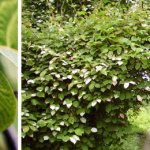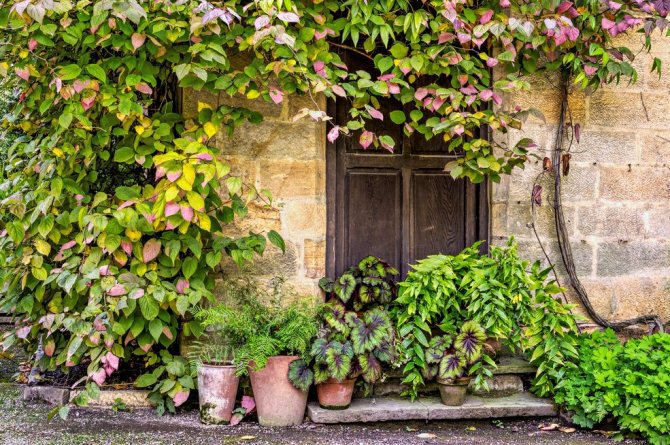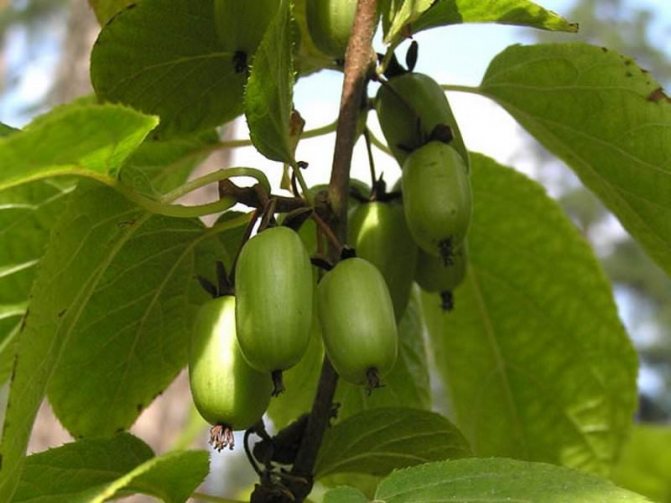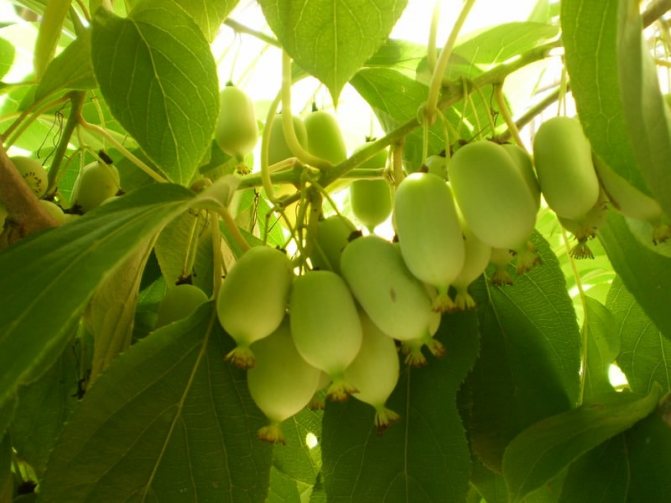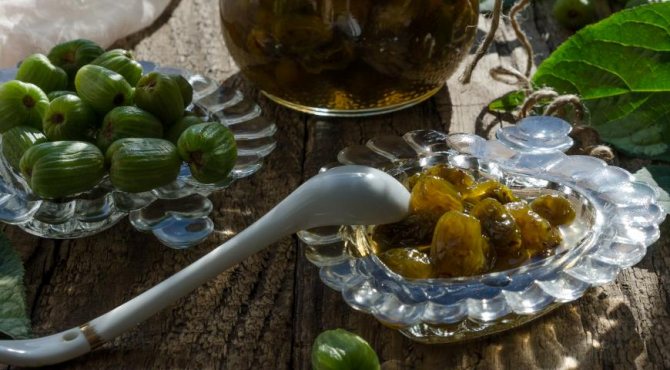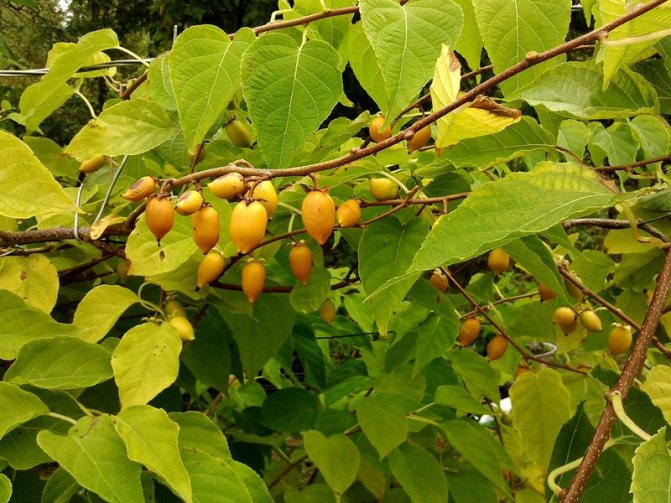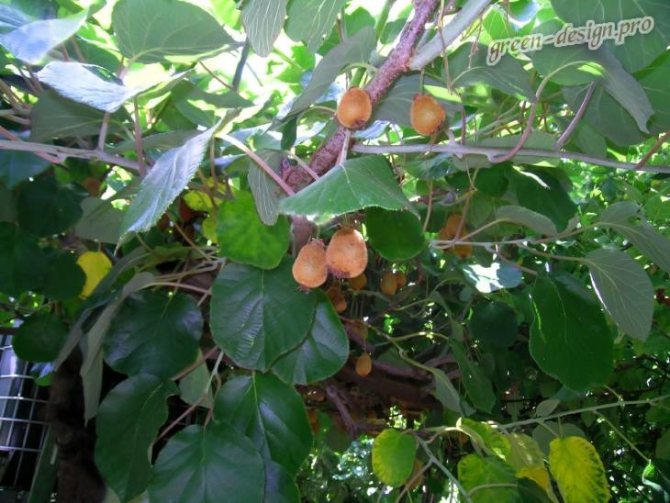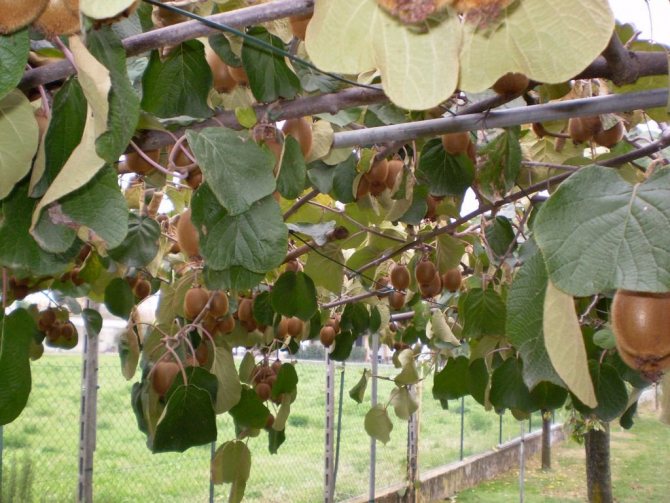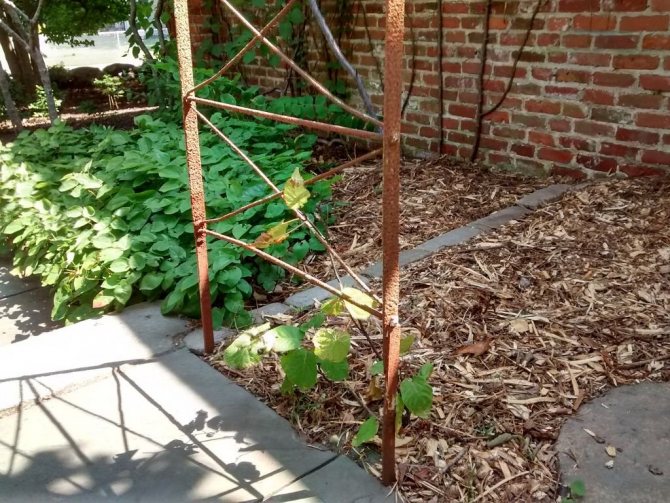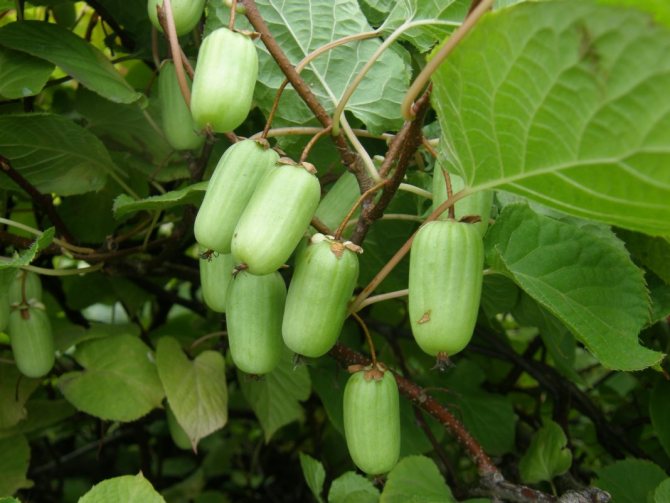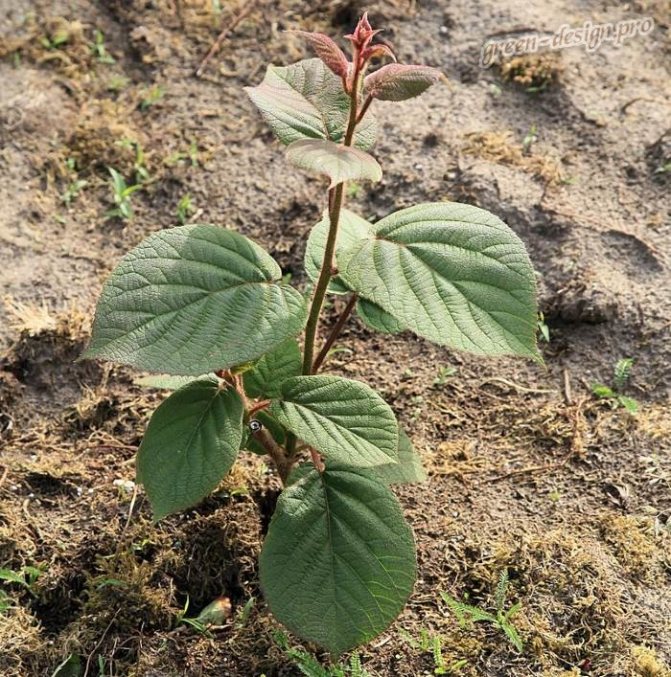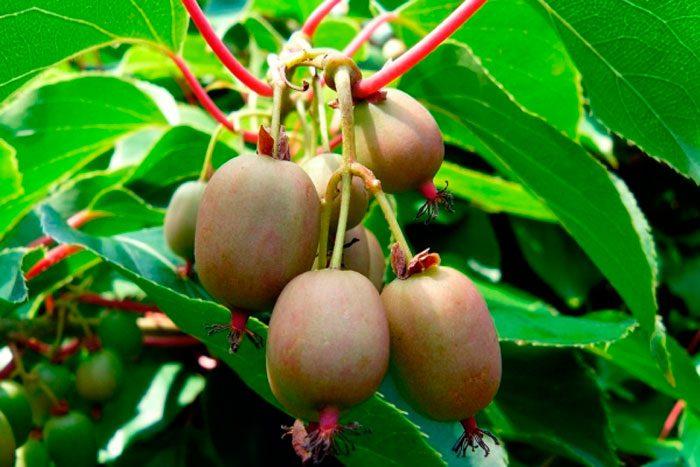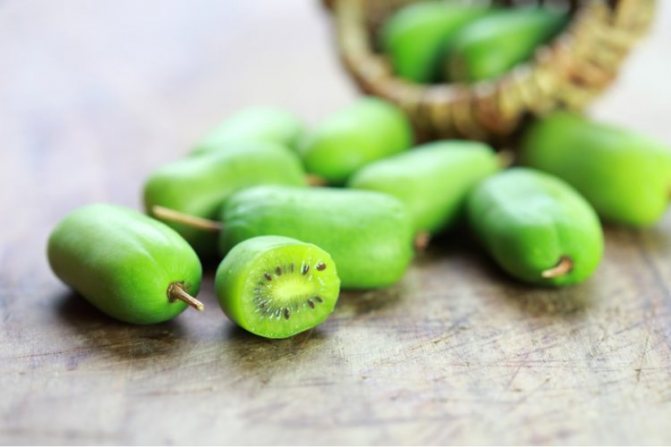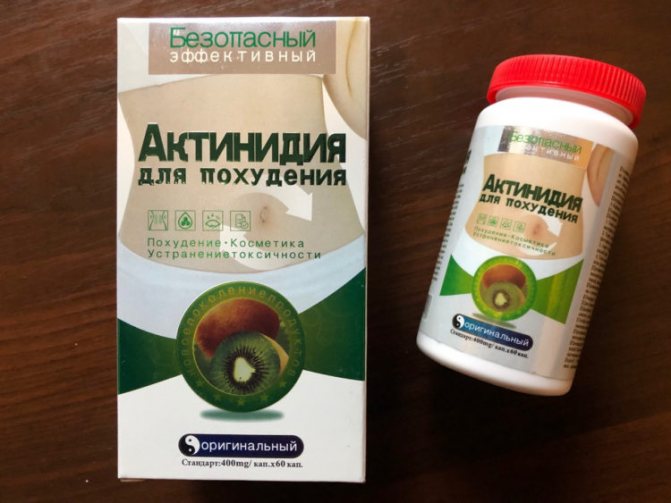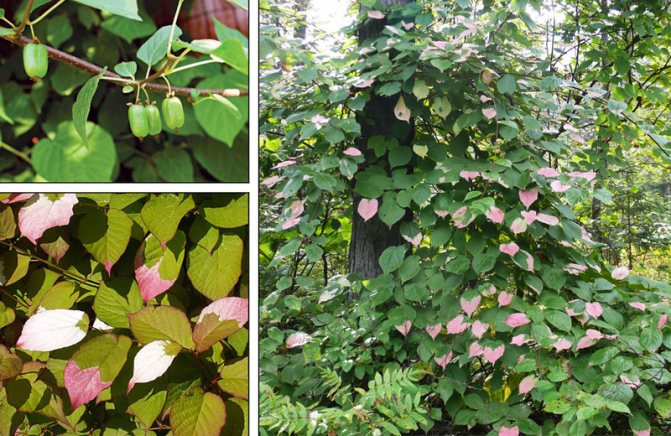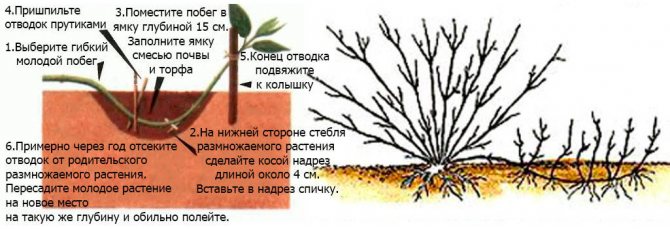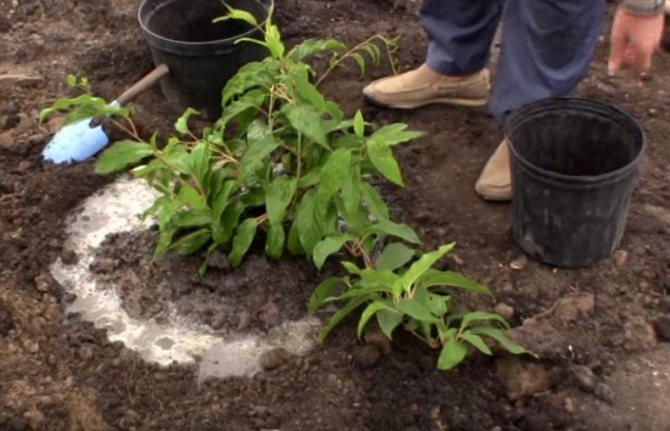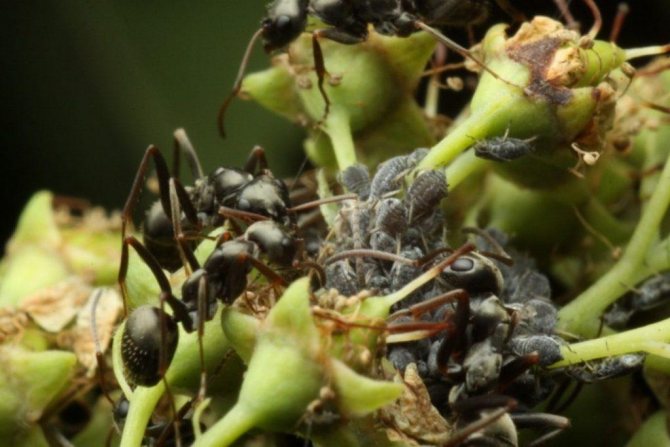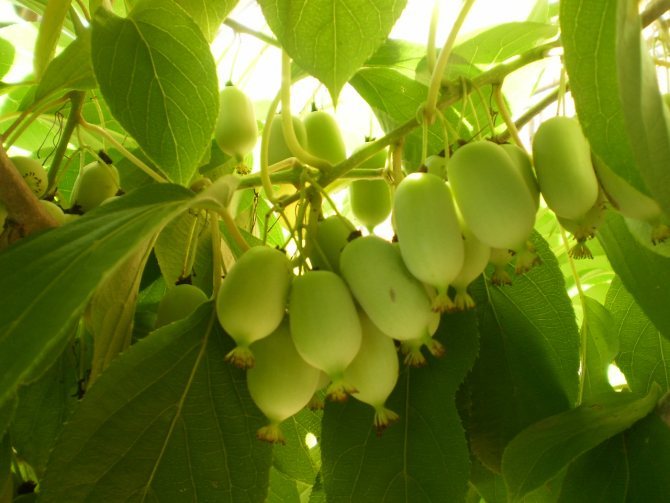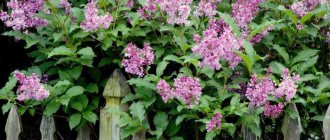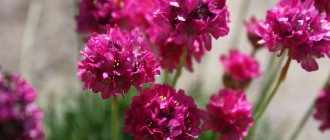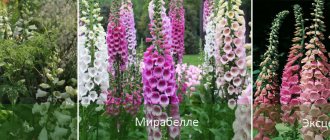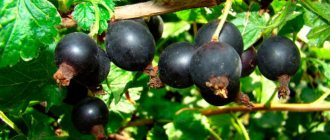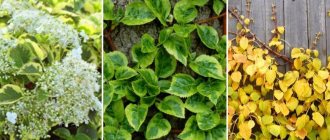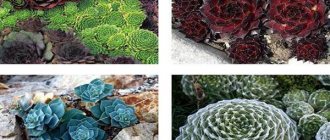Actinidia is now extremely popular with amateur gardeners. This amazingly beautiful liana produces fruits that are unique in their healing properties, which have the ability to very quickly replenish the vitamin balance in the human body.
There are several types of actinidia. One of them is everyone's favorite kiwi, or Chinese actinidia, which today can be bought in any store. But for Russian gardeners, it is not of interest, since it can be grown either in hot climates or in greenhouses.
But actinidia kolomikta (or actinidia variegated) - on the contrary, feels great in our cold climate and can withstand winter frosts up to -44 degrees, even without additional shelter.
In addition, its fruits contain five times more nutrients and vitamins than kiwi.
Actinidia kolomikta is a very ancient plant. It survived the Ice Age and today grows naturally in China, Korea, Japan and other countries in East and Central Asia. In our country, you can find it in the Far East, in the Primorsky and Khabarovsk Territories, as well as on Sakhalin and the Kuril Islands.
It is noteworthy that actinidia kolomikta was the "last love" of our famous breeder I.V. Michurin. In the last years of his life, he was actively involved in the development of new large-fruited varieties of this culture.
Ivan Vladimirovich repeatedly spoke about the unusually valuable qualities of the fruits of actinidia kolomikta and assured that in most of the northern regions of our country this berry can become the most important one in replenishing the vitamin balance in the human body.
He assured that after 30 years actinidia will completely replace grapes in the diet of every citizen of Russia. In addition, the cost of growing this berry will be minimal and affordable for any person.
Unfortunately, the scientist died too early and all research was stopped. The topic was found unpromising.
However, several large-fruited varieties of actinidia, created by Michurin, were saved by his students, and still serve as the progenitors of new, large-fruited varieties.
And today actinidia is actively gaining a place in the areas of amateur gardeners. Planting and caring for it is not a big deal, so even novice gardeners began to engage in this culture.
Description of actinidia

Actinidia is a fairly numerous genus of woody deciduous lianas that grow in the subtropical climate of Asia, on the island of Java and in Russia in the Far East. Actinidia survived from the preglacial period, adapted to the cold snap and perfectly tolerate the climate of the temperate zone of Russia. Thanks to this quality, plants are gaining more and more fans among gardeners.
In landscape design, actinidia is used to decorate gazebos and as a hedge. An adult plant on a support forms a high, dense wall with silky foliage, creating a dense shadow. In autumn, the leaves turn pinkish, yellow or crimson. And in winter, the shoots captivate with their bizarre weaving and graphics.
The anemone leaves have an elongated heart-shaped shape and jagged or smooth edges. In some species, the tips of the leaves turn white, which makes the actinidia plant even more decorative.
Actinidia blooms in April with white or pinkish flowers with a pleasant aroma. It blooms very profusely for 15-20 days.
The fruits of the plant are oblong, pubescent or smooth, with a juicy sweet and sour pulp and pineapple-strawberry aroma.
Male and female actinidia
The culture is dioecious. On some individuals, she has only female flowers, while on others, only male flowers.
For the formation of fruits, it is required that pollen from male plants get on female plants.
Determining the sex of actinidia is easy, just look at the vine during the flowering period. Male flowers lack a pistil, but there are many stamens. The female flowers have a large pistil, while the stamens, on the contrary, are small.
These individuals are 95% sterile. Sex does not change throughout life.


Pollen from one plant to another is carried by beneficial insects and the wind. In autumn, male actinidia changes the color of the foliage from dark green to red.
Females do not have these properties.
On four female actinidia, one male of the same species must be planted.
To date, self-fertile actinidia has been bred.
However, its yield is significantly lower than dioecious lianas.
Pick-up location
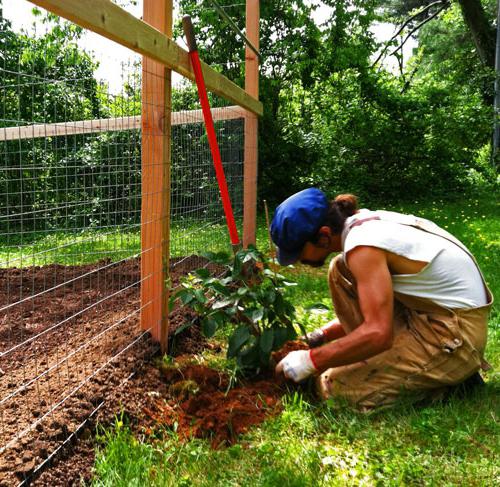

In order for actinidia to please the eye in the garden, planting and caring for the plant must be competent. The landing site is chosen taking into account the fact that actinidia is a long-liver. In nature, its shoots rise, leaning on trees, 20-30 meters above the ground and form dense thickets. Actinidia loves moist soils, but does not tolerate stagnant groundwater. It grows well on slightly acidic and neutral soils, rich in humus and humus. Although all varieties of actinidia are shade-tolerant, it is best to plant the plant on the sunny side in a light openwork shade. Only with sufficient lighting can you get a bountiful harvest. The soil structure should not be dense. The most suitable are fertile loams and enriched sandy loam soils.
Having decided on the planting site, they dig a hole under each plant 60 cm deep and wide. Drainage must be done: pebbles, small pieces of brick, stones are poured into the bottom. The next layer is fertile soil and deciduous humus, complex fertilizers are added, a little wood ash and mixed. They make a mound in the middle of the pit and plant a young plant in it. The root ball must first be well moistened. If the plant has open roots, it is necessary to distribute them over a mound and immediately sprinkle it with earth, preventing it from drying out. The soil around the seedling is slightly compacted, without deepening the root collar, it is abundantly watered and mulched with peat, humus or deciduous compost. In the future, mulching is done every year so that the roots are always moist and not overheated. Actinidia requires a lot of nutrients, and the distance between seedlings should be at least 2 meters.
Planting is best done in early May.
Reproduction
Actinidia is bred by seeds, dividing bushes, root suckers, layering, cuttings.
Lignified cuttings
Usually planted in spring. In the period of leaf fall, the shoots are cut into pieces 40-50 cm long and stored in the sand in the basement at a temperature of -1-0 ° C. In early spring, they are divided into cuttings of about 20 cm and planted according to the scheme 60-70X5 cm.
The survival rate of cuttings varies greatly and depends on weather conditions, type and variety of actinidia. In a cold, protracted spring, it is especially low.
Green cuttings
Most often, actinidia is propagated by green cuttings under film or glass. Cuttings 7-12 cm long in June - early July are harvested from semi-lignified shoots. The substrate is washed river sand or a mixture of peat and sand (1: 1) with a layer of 4-5 cm. Planting depth is 2-3 cm.
The leaves of the cuttings are cut by 1/2, keeping the leaves in the nodes. At favorable air humidity (95%) and temperature (25 ° C) roots appear in 15-20 days.
It was found that cuttings from male plants take root worse than from female ones.
In autumn, it is better not to dig out rooted cuttings, cover them with peat, humus or foliage. The next spring they are planted for growing in a nursery according to the scheme 60-70X10 cm.
Sapling selection
Actinidia seedlings are purchased in specialized nurseries or from well-known gardeners. Pay attention to the condition of the root system. The roots must be healthy, well developed and free from damage. Shoots - no rot, not dry. A closed-rooted annual plant is the best choice, as actinidia cannot tolerate root ball drying out. For three female plants it is necessary to acquire one male of the same species. Interspecific pollination does not occur in actinidia.
Landing in open ground
Actinidia kolomikta
Before purchasing a seedling, you must remember the following:
- Since the plant's root system is very sensitive and vulnerable, it dries quickly, so it cannot be left open on the surface, even for a few minutes. Therefore, when buying, you should pay attention to the fact that the roots are completely covered with a clod of earth;
- Since male and female flowers are located on different plants, you need to buy at least two plants at once. If you plan to plant several bushes at once, then you need to buy at the rate of two males for five females;
- Since it is impossible to determine the sex until the moment the actinidia blooms, it is best to buy the bushes of the plant in special nurseries.
When the seedlings have already been purchased, you need to decide on the choice of location. First of all, you need to keep in mind that the plant is a vine. Therefore, it is important for it to grow upwards, and it will not take up a large area. The most optimal planting option would be to place actinidia along the fence or buildings. In addition, it is perfect for landscaping gazebos or sheds.
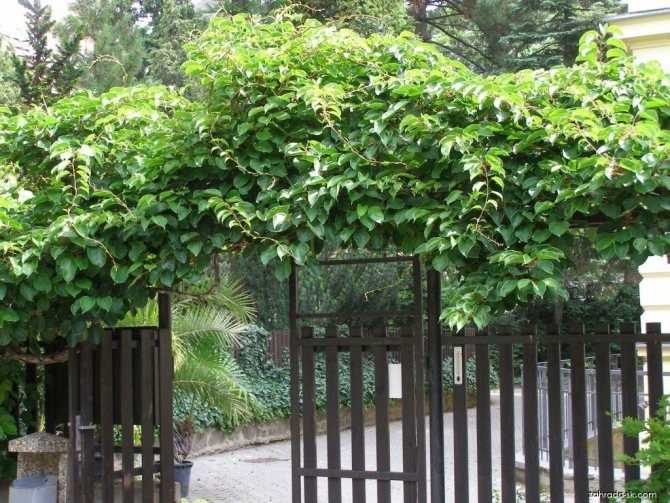

Actinidia as part of the decor of the site
Boarding time
Actinidia is planted in autumn or spring. At the same time, the bush should grow in the nursery for at least two to three years. The reason for this is the poor survival rate of an adult plant.
Planting in spring
It is advisable to plant actinidia in spring or early summer. At this time, she takes root better in a new place. Before proceeding directly to planting, you need to dig holes or even a trench in advance, in which you need to drain with pebbles, gravel, expanded clay, or simply grind a brick. As an alternative, coal slag is suitable.
After the drainage is ready, fertile soil is poured on top, which must certainly be fertilized. For this you will need:
- 8-10 kg of humus;
- 200 g superphosphate;
- 50 g of ammonium nitrate;
- 70-80 g of potassium salt.
Potash salt can be replaced with several glasses of wood ash. It should be remembered that it is impossible to fertilize the soil for actinidia with fresh manure and lime.
You can plant a plant only after the soil in the hole has completely settled. At the same time, a ball of fresh earth must be poured onto the fertilized soil so as not to burn the root system. The seedling is planted with a clod of earth around the roots. You cannot destroy it, just pour it abundantly with water before removing it from the container in which it was stored. The neck of the root system should be at ground level. In this case, the plant should be on a mound, which will not allow rainwater to accumulate in the root area.
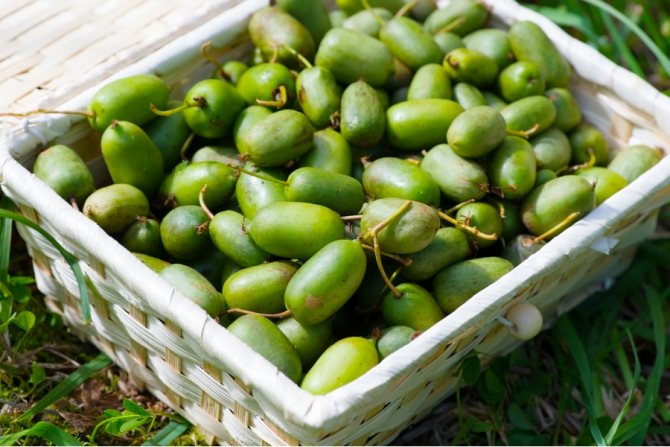

Actinidia berries
Planting in autumn
Actinidia is planted in the fall, similar to the spring planting. But at the same time, you need to correctly calculate the time so that this process occurs several weeks before the first frost.
How to properly grow this plant
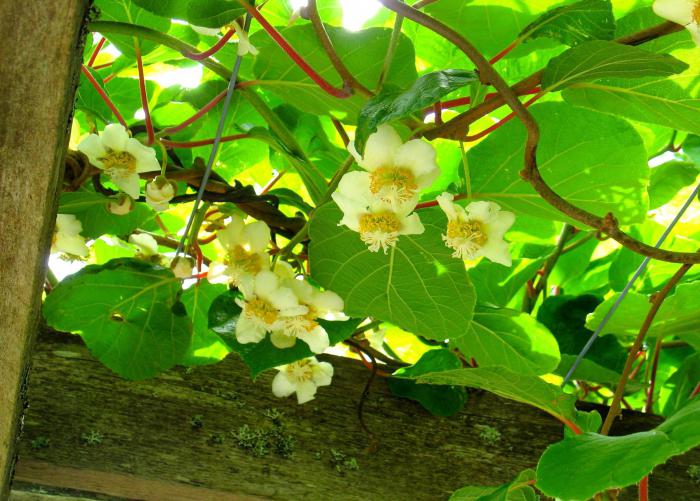

Growing actinidia is not difficult. It is a grateful and useful plant. It has a number of undeniable advantages:
- good frost resistance,
- fast growth,
- decorative shoots. Actinidia blooms very beautifully, but its intertwining vines with heart-shaped leaves also adorn the landscape,
- tasty and healthy fruits. In terms of vitamin C content, they surpass black currants, lemons and oranges. In addition to fruits, flowers, bark and leaves of the plant are used for medicinal purposes.
All the listed properties of actinidia make this type of vines promising for cultivation in the climate of Russia.
Growing actinidia is not difficult. The correct choice of planting material, planting site, variety and type of plant will contribute to successful growth and fruiting. Basic care is pruning, pest and disease control, weeding, watering, loosening and fertilizing. All these methods do not differ from the standard care of other fruit plants.
What is actinidia
A subtropical plant from Asia is a perennial long-lived (up to 40 years) deciduous liana with a woody stem up to 30 meters long. Its leaves are elongated, whole, there are many shoots, which eventually form dense thickets.
That is why gazebos and terraces are wrapped with actinidia, they form a hedge from it or plant along walls, trellises.
The leaves are colored green or variegated, turn yellow or reddish in autumn, which gives the plantings a picturesque look. The flowers are white or yellowish, bloom in early spring and flaunt on the plant for a little less than a month. Some have a pleasant aroma.
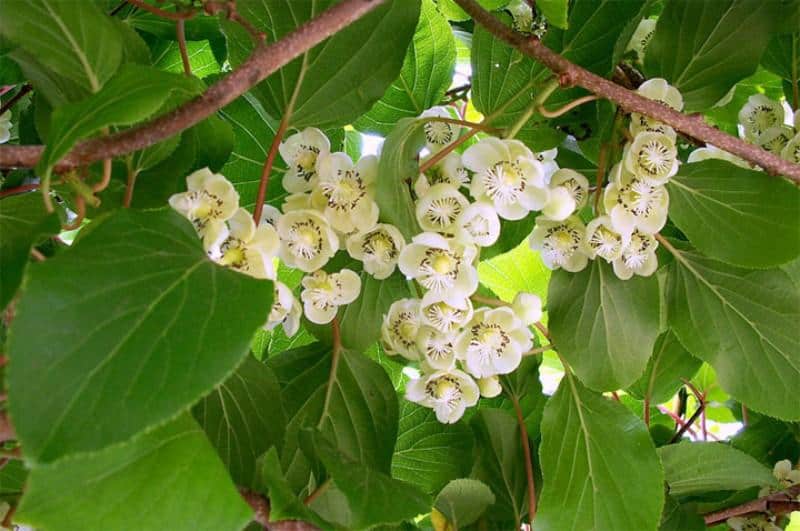

The edible oblong fruits of actinidia are similar to gooseberries, they are pubescent or smooth, sweetish-sour taste, odorous. They are characterized by a high vitamin content
C and trace elements, which makes the plant even more popular. The berries are dried, boiled, frozen, tinctures and wines are made.
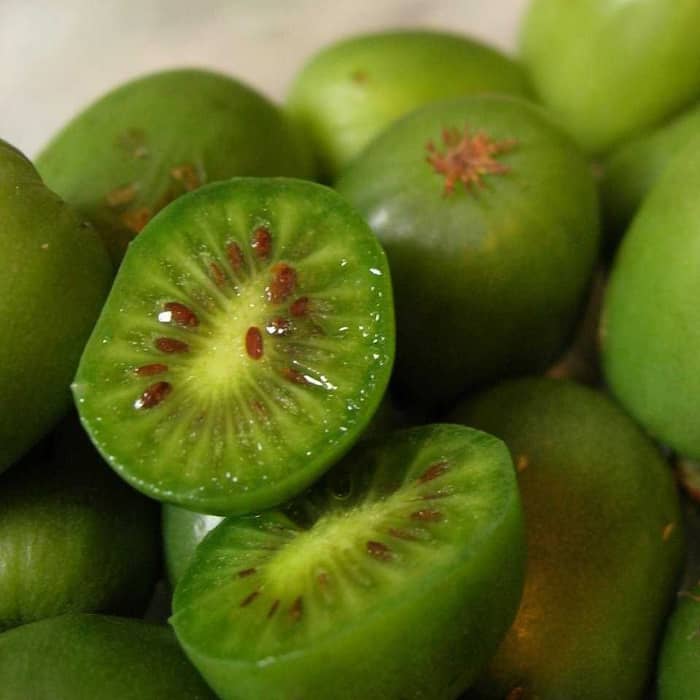

Other parts of the vine are also edible - bark, leaves, stems. The plant is also loved for the fact that it grows quickly, does not get sick, it is unpretentious and frost-resistant.
Reproduction of actinidia vegetatively
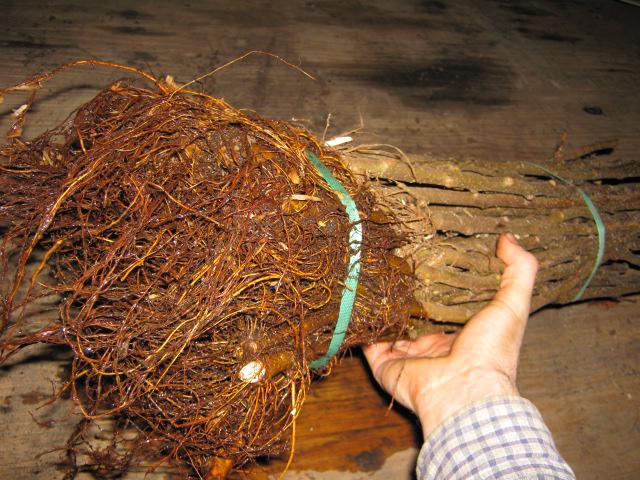

Actinidia, planting and caring for which can be mastered by any gardener, easily propagates vegetatively (cuttings and root layers) and seeds.
The most preferred method is cuttings. At the end of June, mature cuttings are selected and divided into parts of 3-4 leaves. They are planted in a mixture of sand and peat 5 cm apart to a depth of about 6 cm. Moreover, for good root development, the substrate thickness should be at least 25 cm. The seedlings should be regularly watered and shaded, protecting from direct sunlight. Rooting of cuttings occurs 20-25 days after planting.
During the growing season, a strong root system and shoots 30-40 cm long develop. Young plants for the winter are covered with covering material, leaf litter or coniferous branches, and protected from mice and cats. In such a shelter, seedlings tolerate frost and thaw well.
A simpler planting of actinidia is propagation by root layers. The developed shoot is bent to the ground, pressed with a load and covered with earth. The shoot takes root quickly. The next year, young actinidia can be separated. This is a guaranteed receipt of a new healthy plant.
Taking care of actinidia
Care manipulations are as follows: watering, feeding, timely pruning and crown formation, as well as the manufacture of special supports.
It is necessary to water the plant as the soil dries out (it should be wet all the time), and on hot days, it is mandatory to spray the crown in the morning and in the evening. Loosening is done carefully and shallowly, because the root system is quite superficial.
Liana needs feeding, in the spring fertilizers should contain nitrogen, it can be a mullein. In the middle of summer, we add wood ash. Complex fertilizers from the store are also suitable.
Advice! Do not allow the earth to alkalize, remember that actinidia grows on slightly acidic soils.Do not apply lime, as well as fertilizers containing chlorine.
Setting up supports and trimming
Immediately after planting, we install supports, without them you will not be able to cultivate the plant. It is necessary to dig in the pillars, at a distance of at least 2 meters, between them in three or four rows we stretch strong wire or rods (they need to be oriented from west to east). On them we will launch the lashes of actinidia, which we plant from the southern side of the structure.
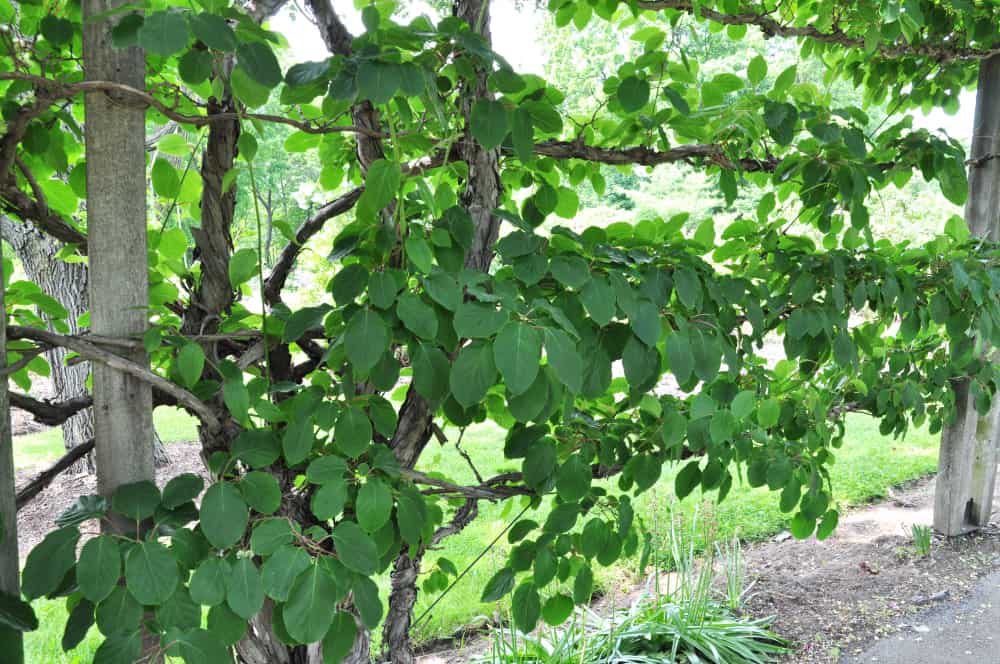

If you prefer the wall of the building, then you still need to do horizontal guides, since the vine will eventually climb onto the roof, and it will be problematic to harvest from such a height.
When the active growth of the lashes begins, it becomes necessary to direct the shoots in the right directions along the trellises. Young plants are not pruned, the procedure is performed only from 3-4 years of age. During the first pruning, only the three most powerful branches are left, the rest are removed.


Attention! Pruning and pinching of shoots is done only in summer, after the plant has bloomed. In the spring there is an intensive sap flow, and in the fall, buds are laid for the next year. By disrupting natural processes, you can be left without a crop or ruin a tree.
In actinidia that has reached the age of ten, you can cut off some skeletal thick branches, while retreating 30-40 cm from the main stem.
Important! Where there are cold winters, in the fall, the vine must be carefully removed from the supports (you can make removable supports and remove the plant with them) for the first 2-3 years and cover with peat or spruce branches. Mature trees already tolerate winter cold well.
The trunk of actinidia is attractive to rodents and cats, so you also need to take care of protection from them.
Pests and diseases rarely damage an adult plant; for prevention, you can spray the crown with a one-percent Bordeaux mixture in spring and autumn.
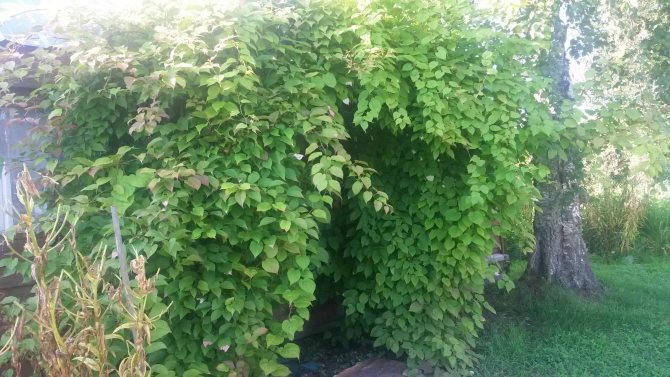

Seed propagation
The most time consuming method is seed propagation. It requires patience, accuracy and some experience from the gardener. It is this method that is used to breed new varieties of plants.
Seeds of actinidia are stratified for 3 months at 4-6 degrees of heat, after which they are sown in light soil and placed in a room with a temperature of 22-27 degrees above zero. Seedlings are protected from the sun, and at the end of May they are taken out into the street and placed in a shady place in the garden. Fortified plants are planted in seedling beds, where they overwinter under cover. The next spring, the actinidia are placed in their permanent place. Seedlings begin to bear fruit no earlier than 6 years of development. When propagating by seeds, it is impossible to determine the future sex of actinidia. Therefore, for successful cross-pollination, at least 4-5 seedlings must be planted.
The right choice of actinidia: planting and care in the suburbs
It is very simple to choose the right variety of actinidia for planting in the Moscow region, but before the first fruiting, you cannot deal with an individual of this plant. Also, such a plant can be grown for about 10 years, but there may be no sense, and if it does, the fruits will be tasteless and small. For this reason, it is better to choose a hybrid variety for growing such a plant. This type of sprout can be purchased at garden stores. If friends have such a plant, then it can be propagated and given to you.
There are several ways to propagate this plant. The main methods are considered to be propagation by shoots and cuttings.
Planting the sprout must be carried out over a large area, the pit should be about a meter from all sides. At the bottom of such a hole, it is necessary to pour a drainage layer, which can be used as gravel, crushed stone and similar bulk material.
The hole should be filled with the following soil compositions:
- A mixture of humus with earth or compost;
- Forest or coniferous land.
In the event that the earth is heavy, then a layer of sand must be added to the bottom of the hole, as well as ash, superphosphate and potassium. Fresh manure, lime and nitrogen-containing fertilizers must not be added.
Not everyone knows that pruning in the spring and shelter for the winter is not just a whim, such a process allows you to properly care for and improve the taste of the plant. In addition, in order to plant a climbing plant with seeds, you need to know that you will have to take more care, so it is better to use seedlings. And in order not to accidentally acquire just a similar plant instead of the original, you need to look at the photos and pictures and find out what actinidia looks like in section, as well as know its description.
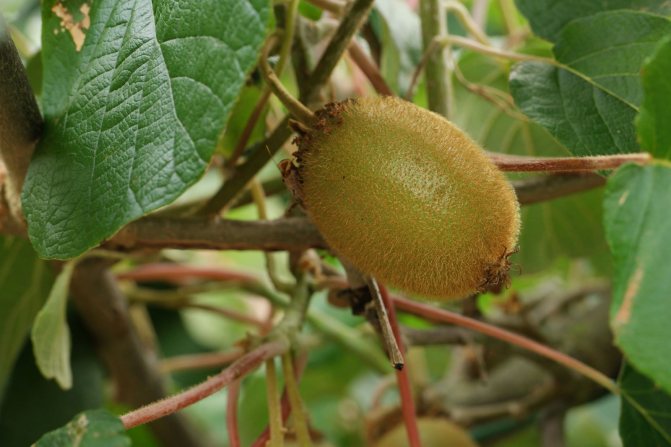

Plant care
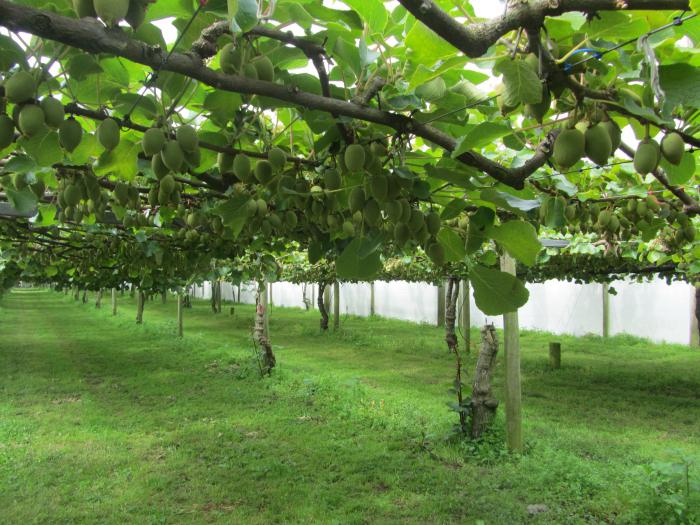

Actinidia does not tolerate direct sunlight. During the first year of life, the seedling is covered from the sun with a light material, ensuring its stay in partial shade. As adults, actinidia no longer suffers from the sun. The soil around the plant is weeded and watered in dry weather, but not abundantly, since actinidia does not tolerate flooding well. It is impossible to deeply loosen the soil around the plant, since the roots are close to the surface. For the winter, young actinidia are covered with leaf humus, leaves and spruce branches from rodents.
In the next two years, they regularly loosen the soil with care, mulch with rotted compost, without exposing the root collar. It is necessary to protect young plants with a net from rodents and cats, which happily gnaw the shoots of actinidia.
For the good development of seedlings, regular feeding, good watering and spraying are necessary. At the beginning of the growing season, actinidia is fed with nitrogen-containing fertilizers or a weak solution of cow manure at the rate of 2 kg per 1 square meter. From the second half of summer, sprinkle with a small amount of wood ash. Actinidia responds well to the introduction of superphosphate (40 g per 1 sq. M.) And potassium salt (10 g per 1 sq. M.).
ACTINIDIA - PROPER CARE WILL PROVIDE A GOOD YIELD
Actinidia is a moisture-loving culture. In the heat, she needs not only watering at the root, but also finely dispersed sprinkling of the entire plant, otherwise the leaves will begin to dry out and the vine may die. Actinidia is watered at least once a week, and in the heat - two or even three.
The root system of actinidia is shallow, so you need to loosen the soil around the plants with great care.
Actinidia is very unpretentious, it needs to be fertilized three times a year. In the spring, after the snow melts, she is given a solution of urea, at the beginning of fruiting - a solution of slurry, in the fall - some kind of ready-made mineral complex for autumn feeding of fruit crops.
It is necessary to form a vine with great care and only before the start of sap flow.
For the winter, adult plants are not covered, since they have increased frost resistance. Young plantings in the first three years are recommended to be removed from the trellises, laid in rings on spruce branches and covered with them from above.
After four years, actinidia is not removed from the tapestries or covered. You can mulch the trunks with fallen leaves with a layer of 20 cm.


Formation of the crown of actinidia
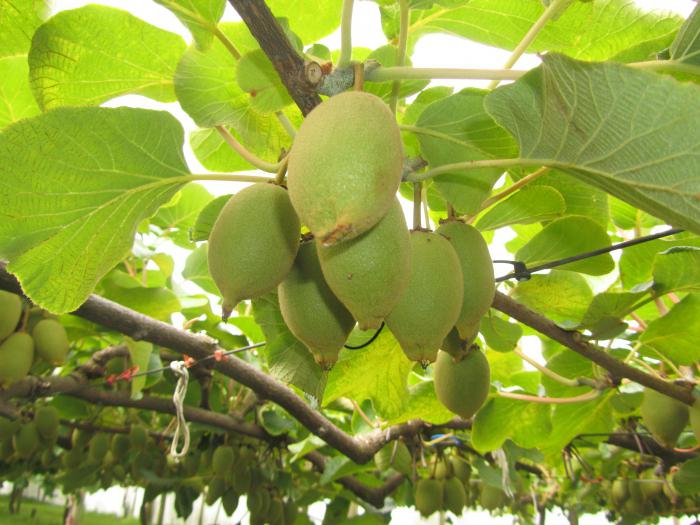

It is possible to trim and form the crown of actinidia only immediately after flowering or in late autumn, after the leaves have fallen off, due to the strong spring sap flow in these plants.
Vines begin to form in the second year, if actinidia is well developed. If the shoots have not grown enough, then the pruning is postponed for 3 years. At the first shaping pruning, three strong shoots are left, the rest are completely removed. The left shoots are tied to a support. In the fall, the tops of the shoots are cut into several buds.
The next summer, of the grown lateral shoots, the strongest are tied horizontally to the support, forming a fan. The rest are deleted again. They try to prevent thickening of the crown.
At 3-4 years of vegetation, actinidia begins to form shorter fruit shoots. They are tied up vertically. In the future, more powerful ones are again chosen and tied horizontally.In subsequent years, pruning actinidia involves removing dead shoots and rejuvenating the plant, for which old branches are cut out.
Actinidia bears fruit in one place for about 50 years and has time to form a powerful trunk, so the supports for the vine should be made very strong. Their height should be comfortable for harvesting and plant maintenance. It is approximately 3 meters.
Agrotechnics
Actinidia is a shade-tolerant vine. But for fruiting, she needs sufficient illumination. Can grow in partial shade. Direct sun is needed at least half a day.
It is undemanding to soils. It can grow with a reduced content of phosphorus and nitrogen.
Prefers sour or neutral soil. Alkaline soil does not tolerate. Plants should not be placed on heavy soils with stagnant water and high groundwater levels. You cannot plant it under trees.
Landing
The planting scheme is 3-4X1.5-3 m, arguta and other vigorous varieties are placed more sparsely.
Actinidia is a dioecious vine. Each site should have 2-3 copies, one of which is male. Planting is carried out in the fall (in October) or in the spring (in April) before the start of sap flow. Planting material - 2-3-year-old seedlings grown vegetatively or from seeds.
Planting pits are prepared 10-15 days before planting. The width, length and height of the pits are 50–70 cm. Drainage is laid at the bottom.
Watered, mulched with humus, half-rotted manure with a layer of 4-8 cm. The aboveground part is cut to 2-3 buds.
Care
During dry periods, actinidia is watered at the rate of 20-30 liters of water per square meter.
At the beginning of fruiting (for 2-3 years in kolomikta, 4-5 years in arguta), nitrogen fertilizers are applied in the spring - 15-25 g / m2 of ammonium nitrate or urea.
Organic and phosphorus-potassium fertilizers are applied every 2-3 years before winter:
- 3-7 kg / m2 of compost;
- 35-45 g / m2 superphosphate;
- 15-25 g / m2 of potassium salt or potassium chloride.
Formation
Actinidia can be formed in 2 ways - with a bush and on a trellis.
The first method is simpler, it provides a good overwintering of the plants when they are covered with snow, however, the bush quickly thickens, falls down, and fruit collection is difficult.
Forming by a bush
A year after planting (in spring), 3-4 powerful shoots are chosen, shortened to 30-40 cm, the rest are cut out. In the future, strong shoots are annually pruned by 1 / 3-1 / 2, weak and thickening are completely removed.
A well-formed bush has up to 10 skeletal branches and reaches 1.5 m in height and 2.5 m in diameter. The need to replace poorly growing aging branches arises at the age of 7-8 years. Such branches are completely cut out, replacing them with new branches.
Tapestry culture
Formations are borrowed from the grape culture. Actinidia is conducted by fan or horizontal cordon.
A trellis is erected 2–2.5 m high. The lower wire is attached half a meter from the ground.
With fan-shaped formation, several strong shoots are grown, distributing them evenly over the trellis.
For a horizontal cordon, 2 powerful shoots are chosen. They are tied to the lower wire in opposite directions. Shoots grow on these sleeves, which are tied vertically. Fruit twigs of 3-4 orders of magnitude are formed on them.
The height of the trellis is 2-2.5 meters. Poles or pipes with a diameter of 8-10 cm are used.
Actinidia of insufficiently winter-hardy varieties is better formed in the form of a fan, bringing out 4-6 stems on the trellis and leaving shoots of 2-4 orders of magnitude on them, placing 1-2 main vines on the lower wire of the trellis.
After falling leaves, all sleeves are removed from the trellis and covered. In the spring, the branches are tied to a wire. Before the start of sap flow, formative and sanitary pruning is carried out, cutting out weakened, broken and thickening shoots. Fruiting shoots older than 4 years of age are replaced with new, annual ones. Bushes over 15 years old, the middle part of which is bare, must be rejuvenated and some of the old branches removed.
Productivity of actinidia
The yield of an adult vine depends on the variety and growing conditions.5-10 kg of berries are harvested from one wild plant. Cultivated actinidia give a good harvest of tasty and healthy berries - up to 50 kg per diana with proper care. Some varieties, with intensive agricultural technology, yield up to 70 kg of berries from a tree.
In some varieties, the fruits ripen together, in others - gradually. In addition to different ripening periods, the fruits of certain varieties differ among themselves in weight, shape, color, flavor shades. Their chemical composition and main direction of use are also different.
Actinidia berries are consumed raw, jam and compotes are cooked from them, they are sprinkled with sugar and stored until spring. Homemade wine is made from fallen fruits.
Where and how it grows
As mentioned above, anemones are native to the Himalayas and Southeast Asia. But Aktidinia Kolomikta and Argut are frost-resistant, so they can be grown anywhere in the world.
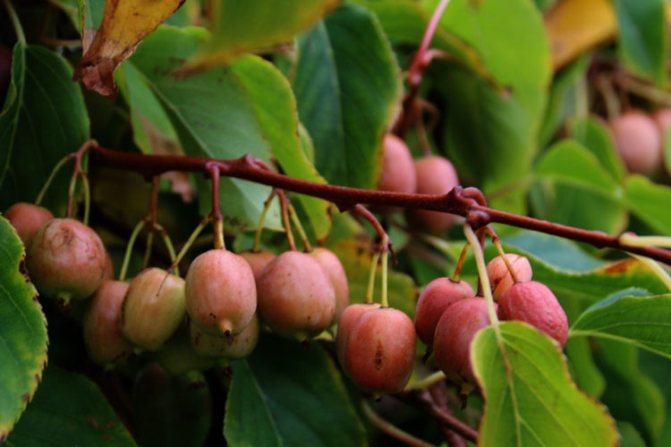

Plants are dioecious (females and males grow separately), therefore, when planting, one male should be planted for every 8 females. If fewer females are grown, then a male plant is grafted into their crown. Thanks to such grafts, you can make one plant from different varieties and get a unique vine with colorful leaves and different fruits.
Actinidia kolomikta
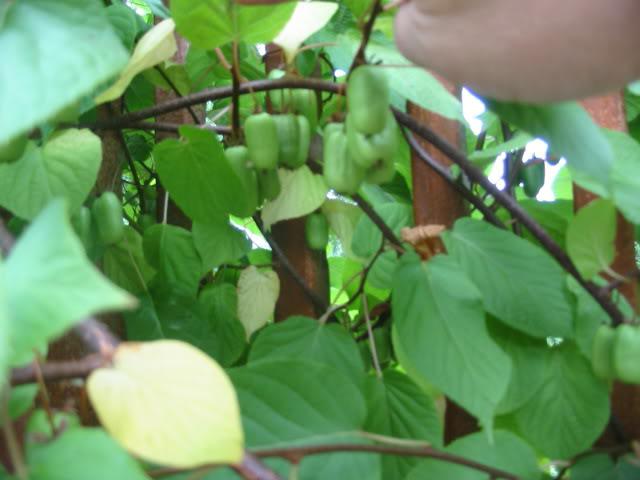

Actinidia kolomikta is the most famous and favorite type of actinidia, it bears fruit up to 25-35 years. A very decorative fruit vine that grows up to 7-8 meters under favorable conditions. It occurs naturally in the Far East along the banks of rivers and streams. Uses trees as support.
Has a characteristic tricolor leaf color. Young leaves are reddish, older ones are green, and before flowering, the tips of the leaves turn white, especially in sunny areas. After 10 days, the white areas turn pinkish, and the vine has a bright festive look.
When the actinidia blooms, the garden fills with a pleasant jasmine scent. The flowers are white and rather large, with long stalks. Flowering lasts 15-25 days.
The fruits ripen in August. They are elongated, green, up to 2 cm in size, and taste like an apple with a strawberry flavor.
Actinidia kolomikta, which is planted in the same way as other species of these vines, has a large selection of varieties. Home gardeners and professionals have plenty to choose from.
What varieties of actinidia kolomikta plant are most popular?
- Kolomikta folk is a high-yielding variety. Has an early ripening date. The berry is compressed from the sides, oblong, with a slight ribbing on the surface. Fruit weight - up to 5 grams, with a high content of ascorbic acid.
- Festive - the fruits ripen in August. They have a highly elongated shape, yellowish-green in color, weighing 3 grams, with an apple flavor. The variety is fruitful, early ripening.
- Grape is an early variety. The color of the fruit is green with a blush, the skin is smooth. Fruits are round, weighing 2.5 grams, 2-2.5 cm long, with apple flavor. The variety is small-fruited, early, productive.
- Waffle - fast-growing, high-yielding. The fruit is cylindrical with a sharp top, weighing up to 3 grams, dark green color with a blush. The taste is delicate, sweet and sour.
- Gourmet is a relatively new variety. The fruit is large with light stripes. Has a pineapple flavor. Mid-season.
- Dr. Shimanovsky is a self-pollinating variety of a new selection. Liana is relatively small. Leaves are dark green, bronze in autumn. The fruits are similar to gooseberries. Grows well on a sunny, wind-protected side. Late-ripening variety.
- Sweet is an early ripening variety. The fruit is yellow-green, cylindrical in shape. It weighs up to 2.5 grams. The taste is marmalade.
- Home garden - the color of the fruit is olive, the taste is pineapple and apple. The size of the berry is medium, weighing up to 5 grams. Early variety.
Actinidia kolomikta, the care of which is the same as for other species of this plant, pleases gardeners with the fact that it is the most frost-resistant.
Medicinal properties and contraindications
Actinidia has tremendous benefits. Its berries contain a large amount of ascorbic acid, fatty oils, micro- and macroelements. Using them, you can heal the body and strengthen the immune system. Fragrant berries relieve whooping cough, scurvy, anemia, bronchitis, tuberculosis, rheumatism, constipation, dizziness, hypertension and fever.
The fruits are eaten fresh and made with jams, preserves, jelly, compotes, marmalade. Bark, leaves and flowers also have beneficial properties. Decoctions and oils are prepared from them for internal use, wrapping and therapeutic massage.
Due to the large amount of active substances, actinidia is contraindicated for people prone to allergic reactions, suffering from thrombophlebitis, varicose veins, and high blood clotting.
Actinidia argut
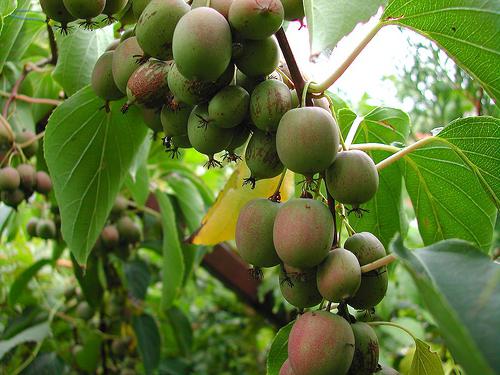

Actinidia arguta is a strong vine, 18-25 meters high and very thick at the base. The bark of the stem is light gray. Leaves are green, monochromatic. Flowers are odorless, larger than that of actinidia kolomikta, with a greenish tinge. The fruits are larger, on average up to 7 grams, with a delicate pulp of sweet and sour taste. The variety is fruitful, but does not tolerate frost well.
On the basis of actinidia arguta, several large-fruited frost-resistant varieties have been bred. They have bright fruity aromas, ripen together and do not crumble. Arguta varieties with a pungent taste are very interesting.
Varieties of actinidia arguta type:
- Firebird - The fruits have a hot pepper taste and a peppery smell. The size of the berries is up to 6 grams. Late maturing.
- The spindle is a late-ripening variety. Fruits weighing up to 6.5 grams, sweet-peppery taste with fig aroma.
- Healing - the name was given to the variety for the high content of carotene in the fruits. The fruit weighs on average 4-4.5 grams. Fig and sweet pepper flavor. Late ripening variety.
Types and varieties
A large number of species of actinidia exist in nature, we all know very well such its type as kiwi (delicacy actinidia). In central Russia, winter-hardy Kolomikta, some varieties of Arguta, Polygamy have become popular.
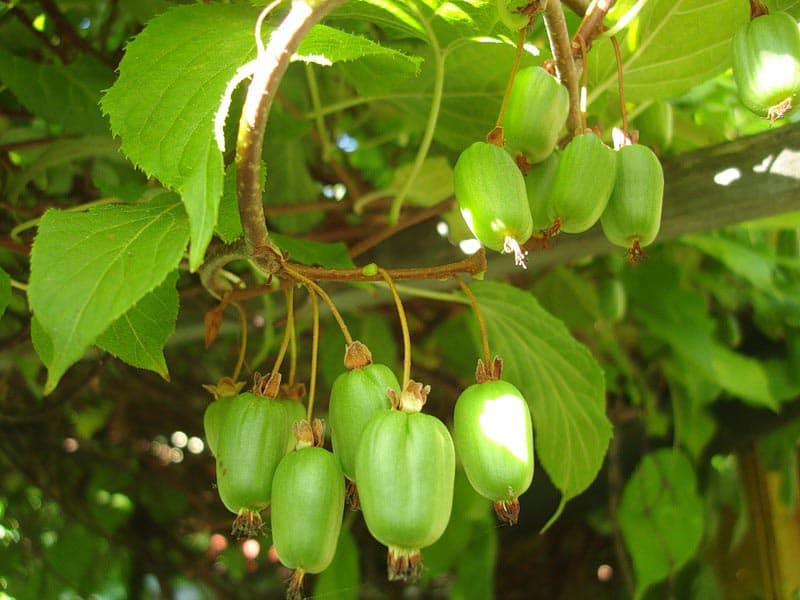

Actinidia Kolomikta
This vine is considered the most resistant to frost, it can survive minus 45 degrees. Grows in culture up to 8 meters. She has variegated leaves, fruits up to 20 mm in size, they have a sweet taste, with a strawberry aroma.
On the basis of this species, many varieties have been bred: Prazdnichnaya and Vinogradnaya, Doctor Shimanovsky and Marmeladka, and other varieties.
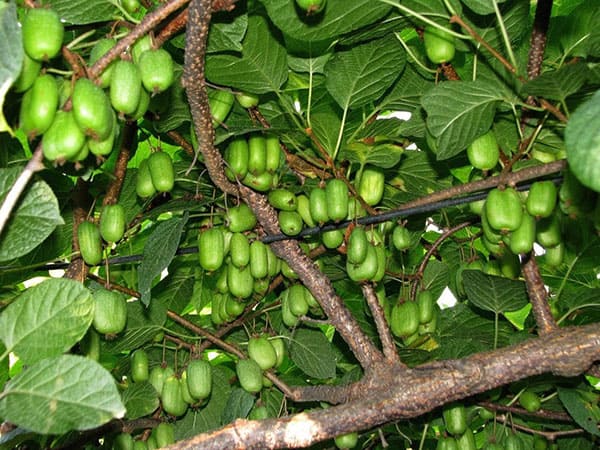

Actinidia Arguta
Liana has a powerful trunk, it grows over 20 meters. This type is less common in Russia, but in vain. It is more fruitful than Kolomikta, Arguta berries are larger, have a sweet and sour taste. Fruits are less prone to shedding, grow in clusters.
Although the Argut actinidia is less winter-hardy, good frost-resistant varieties Mikhnevskaya and Sentyabrskaya were obtained on its basis. An interesting variety with a burning taste Firebird.
Polygamous actinidium
It is a self-fertile species, which is rare for actinidia. When buying its varieties, you don't have to worry about buying heterosexual seedlings. Ripe fruits are orange in color and contain carotene. When ripe, polygamous fruits become very sweet. A productive, long-lived species of lianas. Varieties: Spicy, Zlata, Lesnaya.
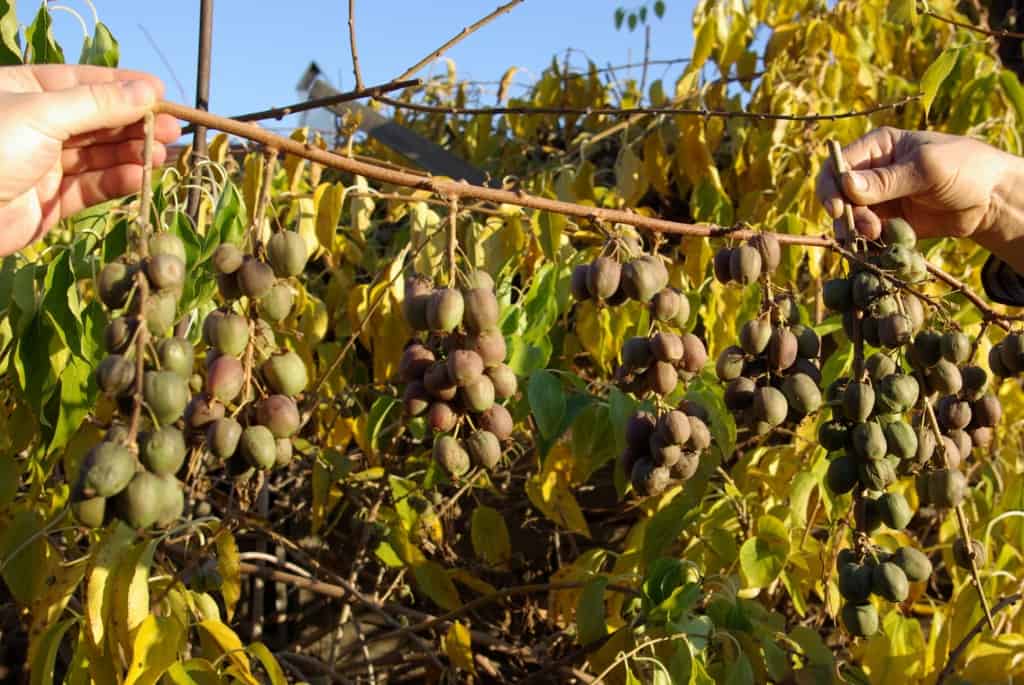

Self-fertile actinidia, or polygamy
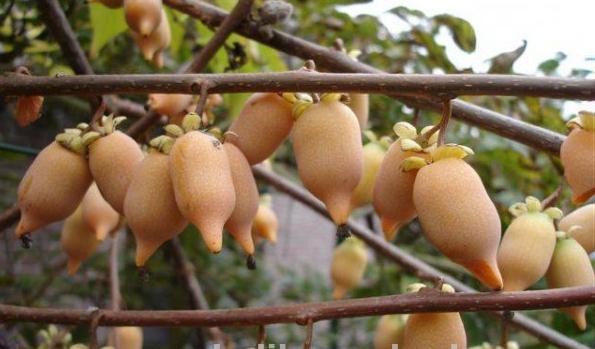

This actinidia is self-fertile. One of the rare self-pollinated species.
A special feature is the bright orange color of ripe fruits. This is due to the high content of carotene, which makes this species of actinidia a worthy competitor to sea buckthorn.
It should be noted that self-fertile actinidia is distinguished by the unusual taste of the fruit. They combine the flavors of paprika and figs and are very sweet when fully ripe. Unripe fruit has a slightly pungent aftertaste. Some varieties have a highly developed pungent taste. The shape of the fruit is oblong, with a sharp tip. Berries are used to make sauces, and salads are prepared from young shoots.All varieties of actinidia polygamy begin to bear fruit already from the third year of life, are distinguished by high productivity and long life expectancy.
Seasonal care in the Moscow region
All varieties are cared for in the same way. The main thing is to follow all the recommendations.
Watering
Does not tolerate dryness and drying out of the soil. Under such conditions, it drops foliage. Because of this, young shoots may die in winter.
It is necessary to constantly keep the earth moist, but without stagnant liquid. On especially hot days, arrange sprinkling.


Top dressing
Fertilizers are applied three times per season:
- After the snow melts. Phosphate fertilizer - 20 grams, nitrogen - 35 grams, potash - 20 grams.
- When the ovaries are formed. Phosphate fertilizer - 10 grams, nitrogen - 15 grams, potash - 10 grams.
- At the end of autumn. Phosphate fertilizer - 20 grams, potash fertilizer - 20 grams.
Spread the dressing dry, slightly digging into the soil. Water immediately.
Pruning rules
The crown is formed from the third year. The procedure is carried out only in the summer. In other periods, the culture will die due to the loss of juice. Young shoots are recommended to be cut in half.
Rejuvenating pruning is carried out from the age of 10.
Other types
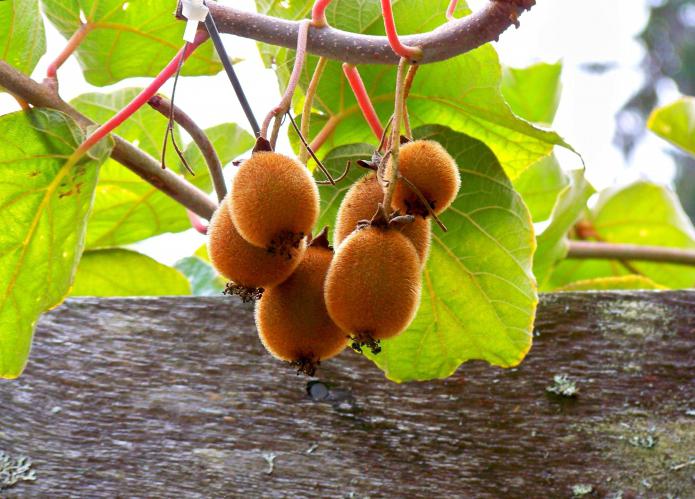

Actinidia is represented by a wide variety of species. We have listed the varieties of the most popular of them. Other species that may be of interest to gardeners are:
- Actinidia Giraldi is a close relative of the argut species. It is rare in nature. With proper formation, liana is distinguished by large fruits of a harmonious shape and with a delicate taste.
- Actinidia purpurea is a thermophilic large liana with smooth heart-shaped leaves. Berries up to 3 cm long, dark red, sweet with a weak aroma. It grows in China, does not winter in the conditions of Russia.
- Delicious actinidia (kiwi) is a wild species native to China. Large liana with massive fruits weighing 35-40 grams. Introduced into the culture in New Zealand, where it got its name "kiwi" for its resemblance to a local bird. Modern breeding offers many improved varieties of this plant with large (up to 100 grams) fruits. Kiwis are of great dietary value. They contain potassium, iodine, vitamins, micro and macro elements. The substances contained in the fruit remove "bad" cholesterol and prevent the formation of blood clots. All these properties fully apply to all types of cultivated and wild-growing actinidia.
- Actinidia large-fruited - bred by Kiev scientists by crossing actinidia purpurea with actinidia argut. The result was a unique winter-hardy fruitful variety with large fruits that taste like pineapple and smell of honey. The size of the berries reaches 10-22 grams. Liana is tall, up to 18-20 meters in height, with strong stems and large leaves. Subsequently, work on hybrid breeding was aimed at enhancing the frost resistance of the plant. Were obtained varieties suitable for central Russia.
And here are some more interesting varieties:
- Actinidia hybrid Sausage - has a bouquet type of flowering, high yield, frost resistance and large fruits weighing up to 15-18 grams. The color of the skin and pulp of the berries is pink or purple, which gives additional attractiveness to the variety. The smell and taste of the fruit is sweet-caramel with fruity notes. Late maturing.
- The souvenir is a late ripening variety. It has oval fruits of green color with a red tint. The weight of each berry is 7-8 grams, the taste is fig.
- Candy - fruits weigh up to 8.5 grams each, green, with a fruit smell.
- Kiev hybrid-10 and Kiev large-fruited - both varieties of late ripening. Berries weighing 8-10 grams have a pleasant sweet taste and delicate aroma.
All new breeding products are suitable for growing in temperate climates and are becoming increasingly popular among gardeners.
ACTINIDIUM - SOME FEATURES
Actinidia is a climbing woody liana that can be up to 8 m long (modern varieties, as a rule, do not grow more than 5 m). Elongated leaves constantly change their color, which greatly adorn the surrounding landscape.
Young leaves are bronze in color, then they brighten and turn green, during flowering, a wide white border forms around the edges, which, after the appearance of the berries, turns into a pale pink color.
By the end of summer, pink is replaced by crimson, and then the leaves turn dark cherry with bright orange spots. It looks just amazing!
Quite large, fragrant, white flowers bloom in early June. Flowering lasts about two weeks, and then numerous oblong bright green fruits, up to 3 cm long, begin to form.
They ripen at the end of August and have an amazing taste, combining aromas of wild strawberry, peach and pineapple. I.V. Michurin called actinidia “the most delicious berry”.
Actinidia is a dioecious plant, therefore, for fruiting, you need to plant male and female plants nearby (preferably for 2 male - 5 female). Read more about this in the article "How to grow sea buckthorn in your garden."
Actinidia is a long-liver plant. She has been able to grow in one place for over 60 years. engage in this culture.


Diseases and pests
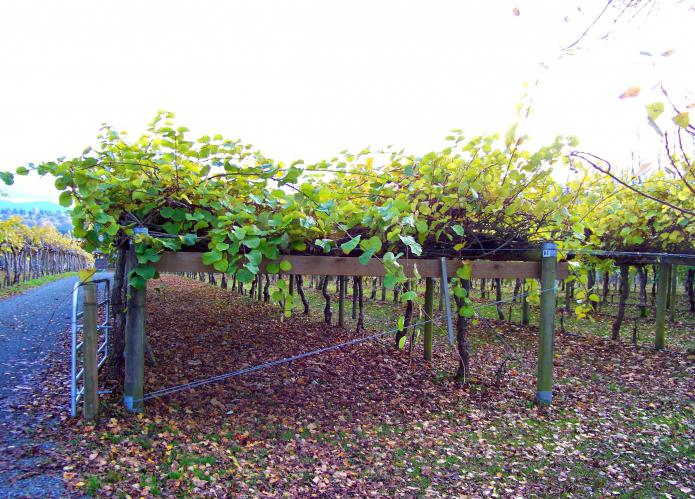

Actinidia, the planting and care of which are discussed above, was brought to our zone from the Far East relatively recently. Therefore, the plant in the middle lane feels good, but several types of fungi and pests can still cause diseases.
Possible diseases of actinidia:
- Phylostictosis is a fungal disease. It appears as dark spots with a reddish border. The leaf blade in the center of the lesion collapses, and the leaf becomes leaky. Old and weakened plants growing in unfavorable conditions or damaged by rodents are affected. Such vines can also get sick with local diseases.
- Ramulariasis is characterized by the appearance of spots on both sides of the leaf.
- Actinidia fruits attack fruit rot and mold. Actinidia arguta is especially susceptible to diseases.
When signs of disease appear, the plant should be treated with antifungal drugs, and the damaged leaves should be burned. In early spring, prophylactic blue spraying with copper sulfate or Bordeaux liquid is carried out.
How actinidia is pruned: cultivation and care
The main indicator of the rooting of the sprout of such a vine is the active germination of the branches in the first year of the plant's life. The main care consists in frequent watering and periodic loosening of the soil.
Such a sprout is to the taste of cats. For this reason, the planted seedling must be protected from cats for about a couple of years. To do this, you can use a mesh netting, which can be wrapped around the stem of the plant.
According to the types of vine, the bush can be created in different types.
For example:
- Formation of a bush fanlike. This formation can be achieved using 5 seedlings that are evenly spaced on the surface. In order to get such a formation, it is necessary to pinch such a plant by 70 cm in August. Such plants are used for 3 years, and after that they must be changed.
- Formation of two sleeve bush. In this case, vertical shoots are created. Such sleeves bear fruit for about 20 years and only after 20 years do they need to be changed.
As for pruning, it is carried out in late autumn or when the snow melts.
Only frozen and damaged branches are removed.

